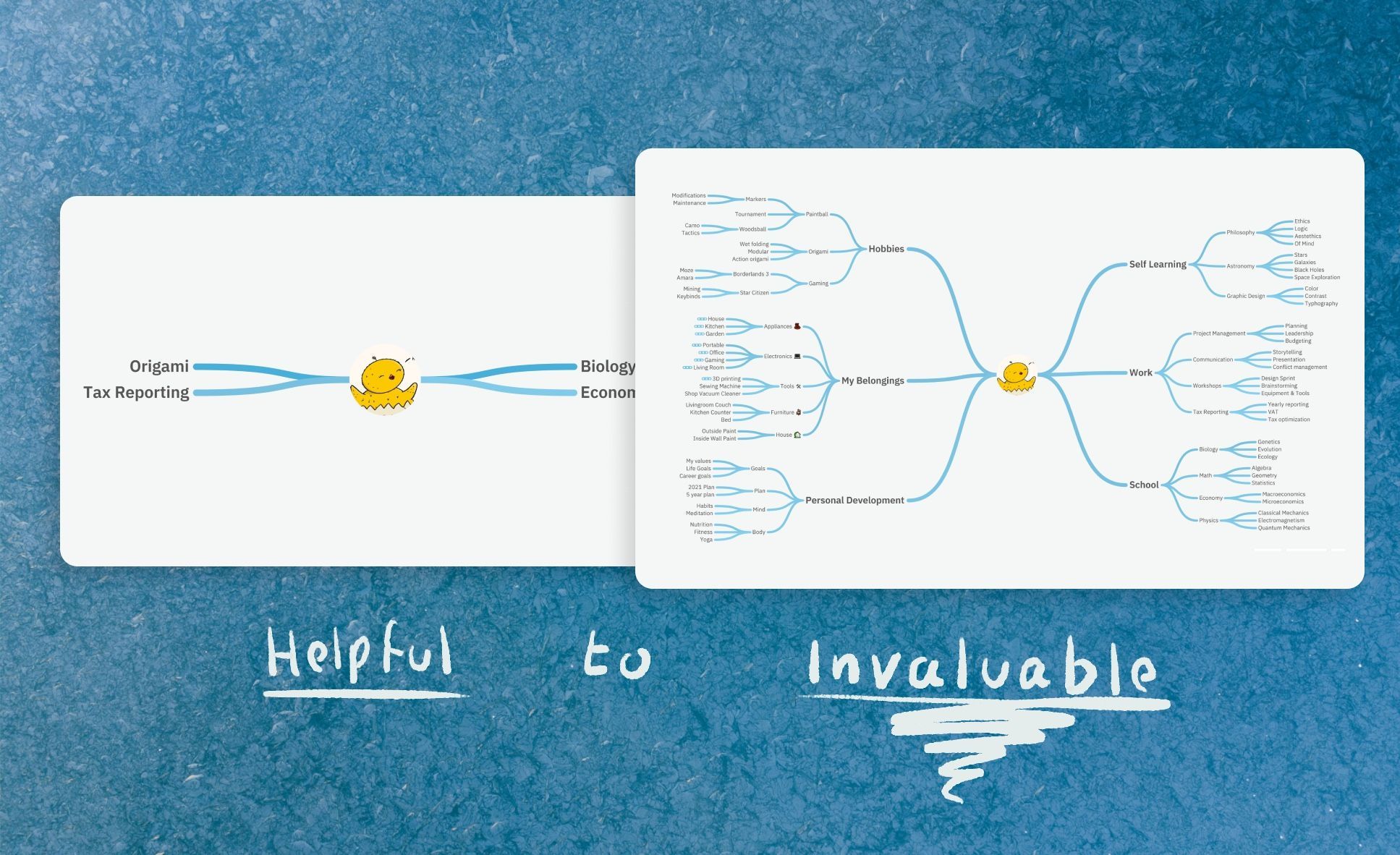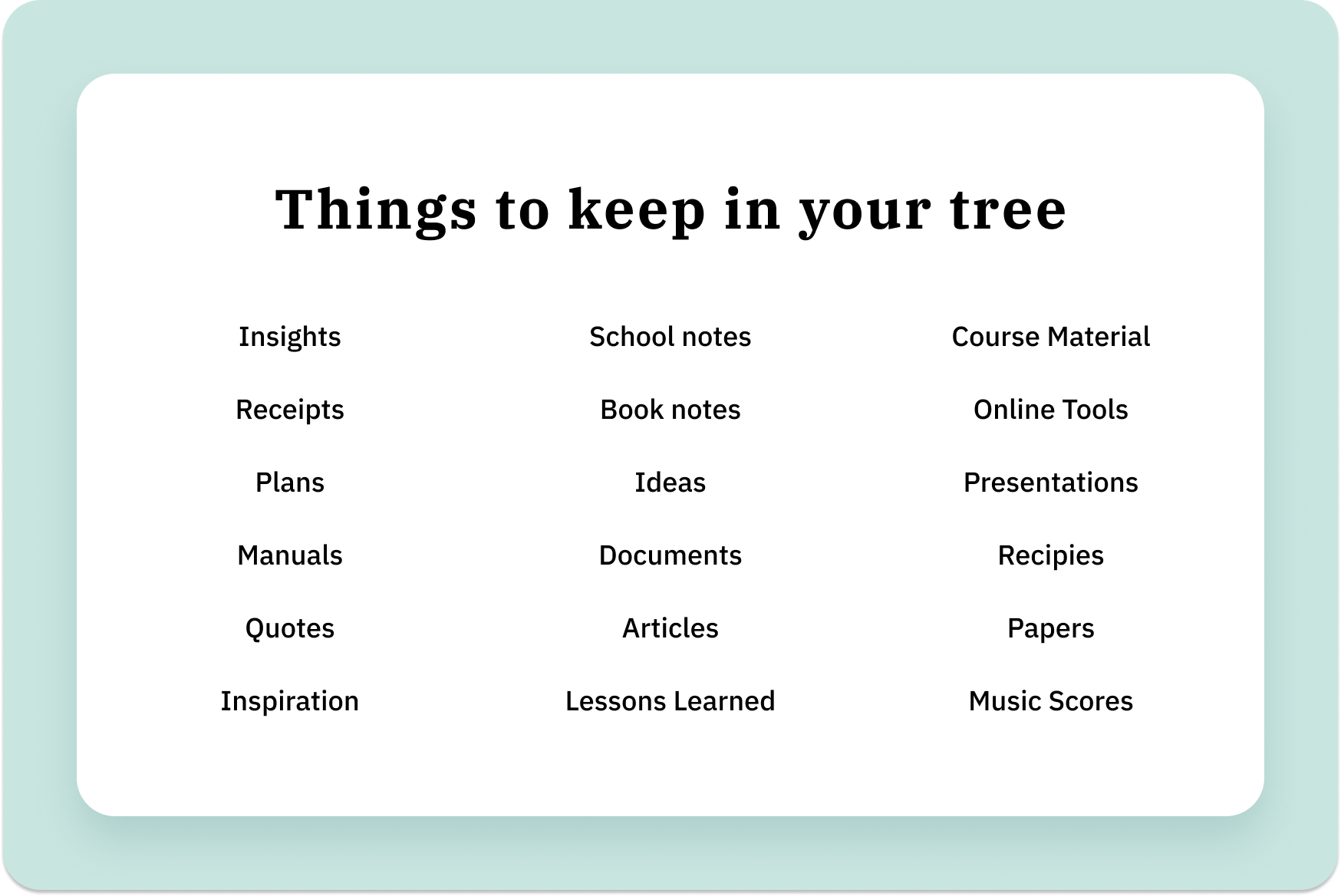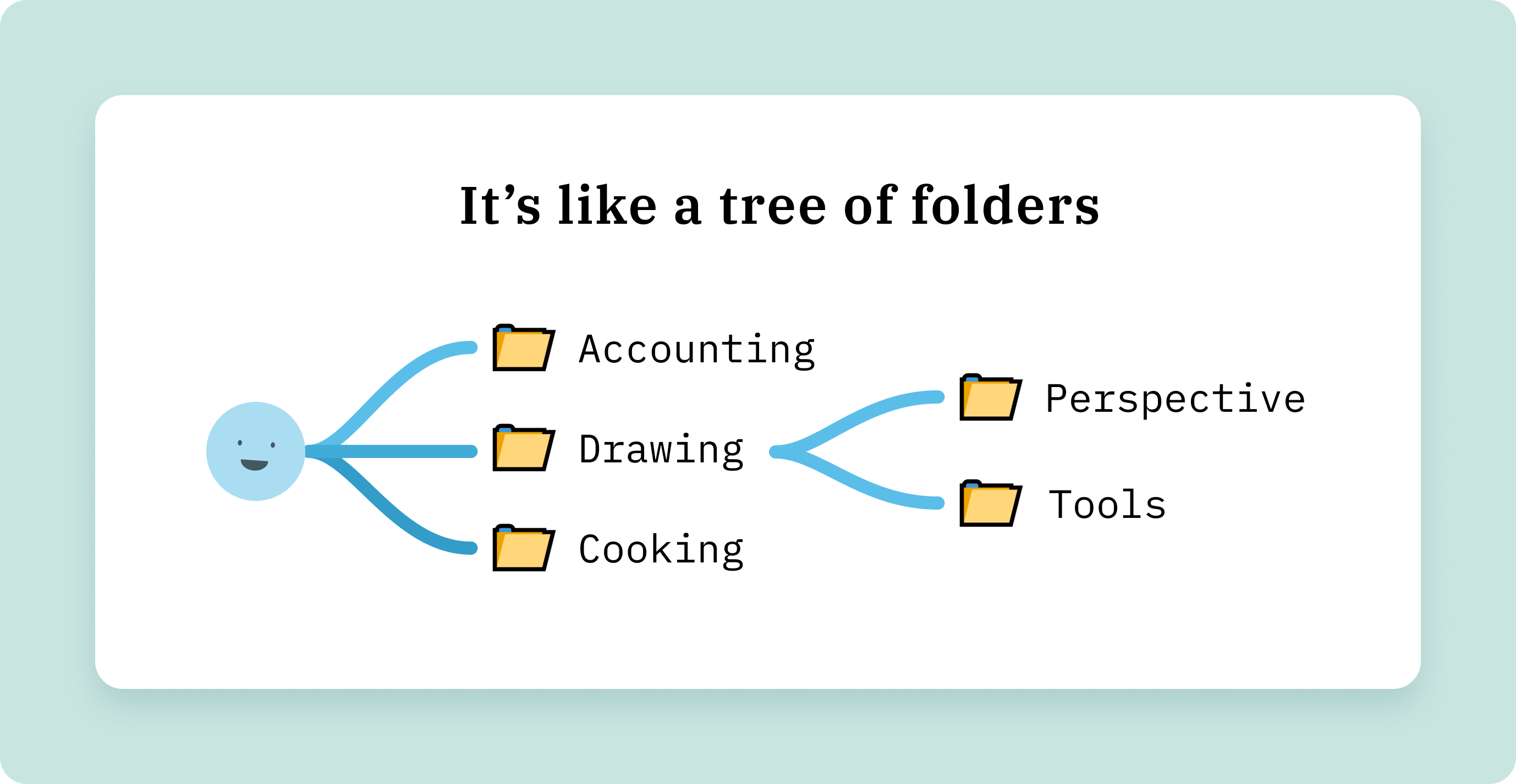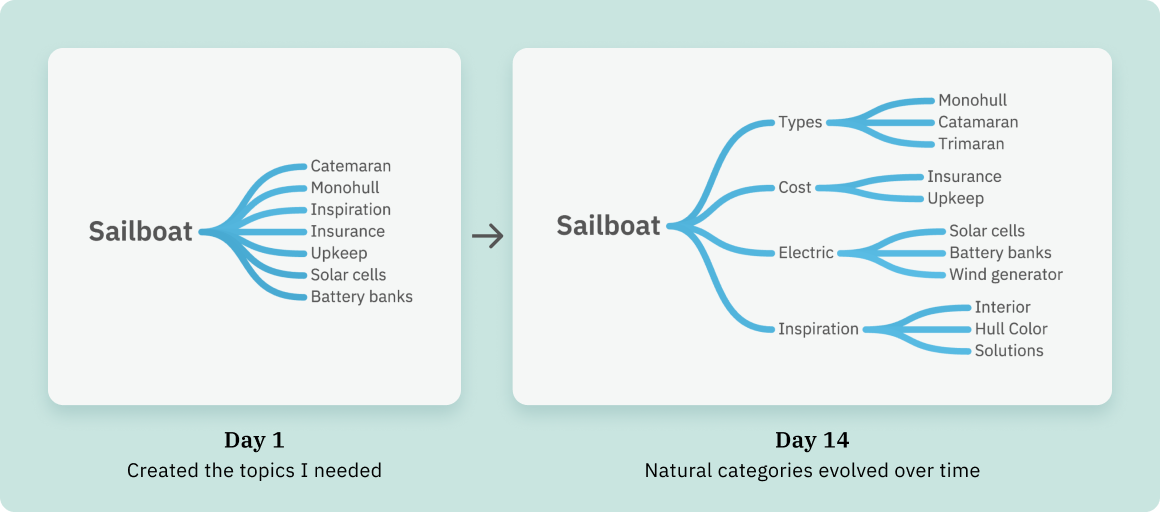How to get started with your knowledge tree
Learn how to use a knowledge tree to be in control of your information, learning, and insights.

Starting with a blank canvas can be tough. Especially with an unfamiliar concept like a knowledge tree.
However, when you learn the basics, you will find that growing your tree is both easy and rewarding. And before you know it, your knowledge tree will become your trusted library, where you are in full control of all your information, insights, and learnings.
So, in this 5-minute guide, I will help you get started, and show you how to get the most from your knowledge tree.
You will learn:
- What topics to include in your knowledge tree
- What information to store in your tree
- How to break down your topics
What topics to include in your knowledge tree
Information is all around us. Whether we are at working, studying, cooking, or doing taxes. There are so many areas where it's useful to keep track of our information.
And, when it comes to your knowledge tree, I recommend bringing many, if not all, of these areas as you can into your tree.
Typical areas you can include are:
- School
- Work
- Personal development
- Hobbies
- Household
- Finances
Here's an example how an knowledge tree with these areas could look like:
What you include in your tree pretty much depends on what your interests are. When your knowledge tree matures, you will start seeing a map that reflects you as a person. A map of the things you know, do, and care about in one single place. A map that is uniquely you.
As an example, you can see my personal knowledge tree below. It's my personal library for all aspects of my life. From work and business, to gaming and health. Feel free to expand the branches to discover all 900 topics.
My knowledge tree, with all notes and resources removed. Click the full-screen button to get a bigger view
For more examples, check out the "Share-your-tree" channel in our community chat.
What information to store in your tree?
Your knowledge tree can store all kinds of information. So feel free to store whatever you think could be useful to you later.
For inspiration, here are some examples of what people keep in their knowledge trees:

Many of these items are probably familiar to you already. Perhaps you store bookmarks of interesting articles, and recipes for delicious dishes. Or, you write down your insights from a lecture or a meeting.
What's new with your knowledge tree, is that you can bring all of these different formats into one place. Your tree supports bookmarks, files, and notes. So, whatever formats your information comes in, you can store it in your tree.
Your tree helps you be intentional
Another bonus of using a knowledge tree is that it can help you resist the urge to keep the information you find exciting at the moment, but that's probably not useful for you in the future.
For example, when you come across a bit of interesting information, say an interesting article in a newsletter. Your first instinct may be to think, hey, this is interesting stuff, I need to keep this!
However, when you go to save this article in your tree, you discover that you have no topic in your tree where it could belong. Therefore you have to decide if you should create a new topic or not.
Having to make this decision is actually very helpful. It helps you make a more intentional choice about what you keep or not. It allows you to reflect if this topic is important enough to expand your tree, or if it's just your brain being excited about a new and shiny thing.
Since our brains love new novel things, It's easy to fall into the trap of saving something that's probably not important to us. However, your knowledge tree can help you stay focused by being your guiding compass that clearly shows what you have decided is important to you.
How to break down your topics
Your knowledge tree uses a mind-map vizualisation. And, compared to traditional apps, this new organizational structure may feel unfamiliar.
However, a knowledge tree is actually very similar to organizing your folders. But, now, all of your folders are in a big tree.

The main benefit of using a mind-map visualization like this compared to traditional folders is that you can create a much more nuanced breakdown without it becoming messy.
When using folders, people usually only go three levels deep, on average. Any deeper, and you start to lose the overview of the structure.
However, with a mind-map visualization, you can go much deeper and still maintain a clear overview. Mainly because you can always see everything at once, and since each topic has a spatial location, which our brains are great at remembering.
So don't be afraid to add a lot of topics. They will only help you create a more nuanced view of your topic. And it will make it easier to organize and re-find the information you capture.
Don't worry about the "perfect" breakdown
When you have to add new topics quickly because you have a resource you need to store, I recommend not giving too much time and effort to find a perfect breakdown. You only risk losing focus on what you were doing.
Topics are easy to move around in your knowledge tree, so it's no trouble to refine your breakdown later and let it evolve over time. As an example, you can see how my branch on sailboats changed during the two weeks I researched the topic:

By only creating the topics you need and letting your tree evolve over time, you can:
- Keep the flow of your original task, and save you time
- Keep a tidy tree since you are not bloating it with lots of empty topics
- Evolve a natural breakdown of the topic that will help you build a better understanding of the topic
So feel free to be a little messy in the moment. It's helpful.
Use Emberly to create a mind-map
Other times, you don't have anything to store. Instead, you want to visualize a topic to understand better how it all fits together.
Here, Emberly has the same strengths as traditional mind-maps. But as an added bonus compared to mind-map apps, you can use the map you just made to store the information you capture later on.
When creating mind-maps like this, you can find it helpful to keep them in a separate map from your knowledge tree. This way, you don't have to worry about restricting yourself to keep your knowledge tree tidy. And if you ever think the breakdown you made could be helpful in your knowledge tree, you can simply copy it over.
That's all for this guide. If you have any questions or feedback, please feel free to send me a mail at gina@ember.ly or contact me on the Emberly discord server.
Have a great day!

